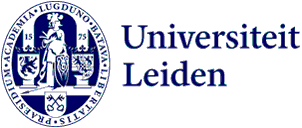Research Themes
Members of the collective explore what it means to be ‘human’, in the past and present, from a range of different perspectives and inter-disciplinary approaches.
The research is broadly organised around seven main research themes. Find out about individual research projects through the members page.
Origins of Sociality

Human beings have created social structures that are unique within the animal kingdom. These allow us to build connections across groups, and access and share information that would otherwise not be possible. How and when did these social structures evolve?
Diet, Cooking, and Health

Dietary choices are deeply tied to identity and culture, but also reflect biological and technological adaptations, from cooking to agriculture and industrialization. Compared to our chimpanzee-like ancestors, humans today eat a dizzying array of foods, from a wide variety of habitats. How did this process occur, and have our bodies kept up with the changes to our diet?
Migration and Population Dynamics

Our shared history is one of movement; from the first humans in Africa to the forced migrations of enslaved peoples. Movements of people led to mixing of cultures and new innovations. How much of the past, and present, is shaped by these migrations?
Development of the Human Form

While we share up to 98.8% of our DNA with chimpanzees, our physical form has undergone considerable changes, from larger and restructured brains to arms and legs that bear our weight with different modes of locomotion. Can we reconstruct the evolutionary pressures that led to our unique form?
Niche Construction and Human-Environment Interactions

Like beavers, humans are extremely good at modifying and altering their physical landscapes, in order to increase their collective ability to survive. The changes we make have direct impacts on the animals and plants with which we share our habitat. How did this ability to change our environment evolve, and how can we control some of these changes in the present day?
Evolution of Cognition in Human and Non-human species

Our conception of the world is shaped through biological pathways, shared beliefs, and the physical constraints of the world around us. The way we think therefore is a reflection of the interaction between our bodies, our cultures and our environments. How does our cognition differ from that of other animals, and what does that say about these influences on our shared history?
Material Culture and Technological Change

The tangible reflection of our technological abilities are encapsulated in the physical objects that we create. By understanding the materials that humans create and leave behind, we can explore their values, goals, and cultures, in addition to reconstructing their cognitive abilities. How have these aspects changed through our evolutionary history?

